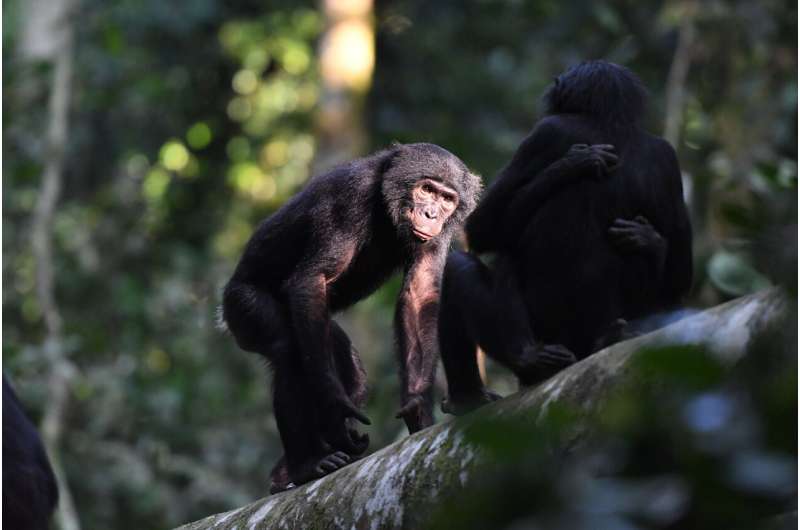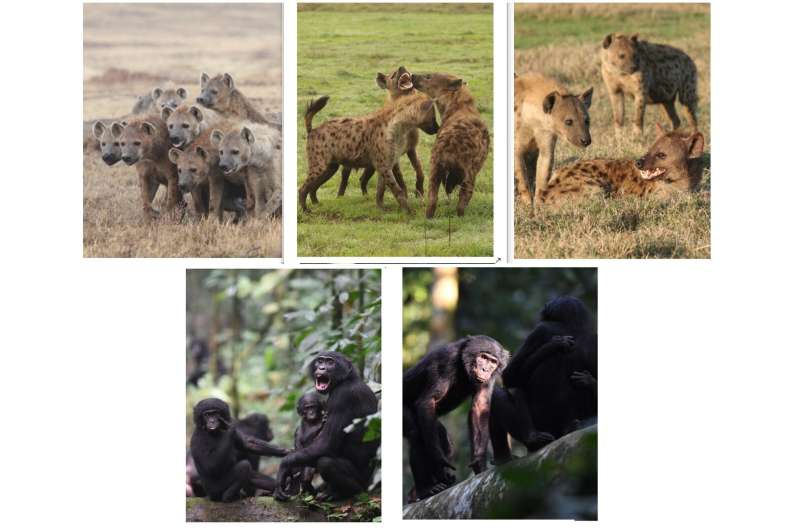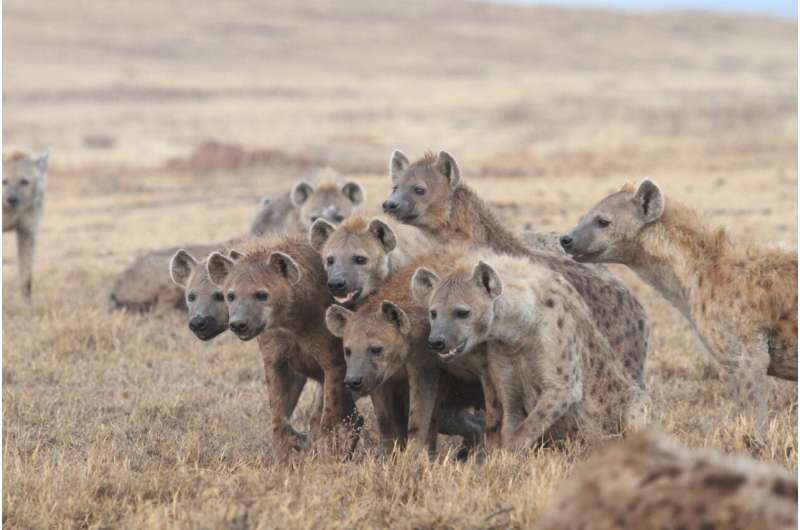Male and female bonobos interact. Credit: Martin Surbeck
In the wild, it might seem like male animals run the show. But in a review publishing in Trends in Ecology & Evolution on May 18, researchers lay a new framework to assess power distribution between the sexes, and its application shows that in some animal species, females rule the roost and that their paths to power look very different than their male counterparts'.
Social power among animal species has typically been categorized as being either male dominated or female dominated. "Progress in this area has long been hampered by a binary vision of power asymmetries between the sexes, where most species were dominated by males and female dominance was anecdotal," says co-author Elise Huchard, a behavioral ecologist at the Institute of Evolutionary Science in Montpellier, France. "This simplistic view has been reinforced by stereotypes that researchers carry because of the society in which they live and then unconsciously project onto the animals they're studying."
Huchard has spent part of her career studying power dynamics in mammals and noticed that the distribution of power between the sexes was rarely quantified. After she and her colleagues carefully defined what power means and how it can be measured in animals, they developed a system by which to measure it. "Any species can be positioned on a continuum from strict male dominance to strict female dominance so that we can actually test hypotheses regarding how females or males can empower themselves," she says.
The power continuum developed by Davidian et al. with the power distribution between the sexes quantified. Credit: Davidian et al./Trends in Ecology and Evolution
For males, the path to power seems simple: coercion and physical dominance. For females, however, the routes to establishing social power can be physiological, morphological, behavioral, and socio-ecological. The common thread for species in which females hold power, such as hyenas, lemurs, and bonobos, is reproductive control, control over when and with which partner to mate. This comes in the form of resistance to mating, promiscuity, and even, in the case of hyenas, genitals designed specifically to allow the females to control fertilization.
Coalition of hyenas. Credit: Oliver Honer
"We hope that this framework will be used to quantify intersexual power in reproductive and social contexts and to facilitate the study and comparison of intersexual power relationships across mammalian societies, perhaps even including humans," the authors write.
More information: The eco-evolutionary landscape of power relationships between males and females, Trends in Ecology & Evolution (2022). DOI: 10.1016/j.tree.2022.04.004
Journal information: Trends in Ecology & Evolution
Provided by Cell Press


























